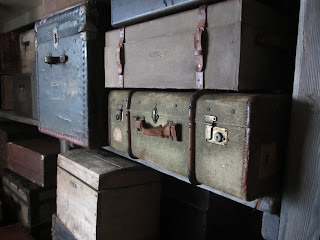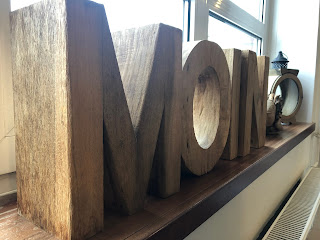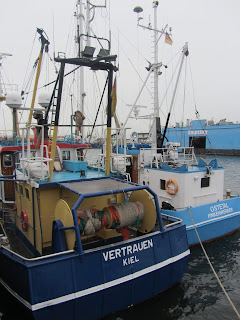First, we visited the "Wrackmuseum" in Cuxhaven which focused on the city's shipping industry from historical to today's time as well as the ship wrecks found around the area.
The museum was placed in part of an old huge fish storage building made out of red brick stones and featured very interesting exhibits. In one of them, you could follow the journey of a young man starting as a fisherman on one of the early small fishing vessels - as it turned out, due to various reasons - besides stormy seas - a strenuous and dangerous job.
Two films - one about fishing in the 50s and one from today - highlighted the huge developments on the fishing boats and critically looked at the impact of overfishing.
Another part of the museum, focussing on ship accidents, featured exhibits from various wrecks including a tower of a British submarine and an enormous ship's propeller.
The second museum we visited was located at the Bremerhaven harbor at the spot where in the earlier times passengers were leaving in ships to start a new life in mostly the US and South America.
Every visitor was assigned a life story of a man/woman leaving Germany behind, be it to flee from political oppression, the desire to live a better life or to follow their dreams.
My character was that of a woman, first in her town to attend high school and then college, becoming a doctor but ultimately having to leave Germany with her husband and son before World War 2 as they were Jewish. She stayed in the US for a majority of her lifetime, but unfortunately was never able to work as a doctor again.
In a huge library, hers and many more stories were shown which was interested to read and went over several decades.
Boarding the exhibition was like boarding one of the huge steamships in a dark atmosphere, showing how unknown both the journey and future ahead were for most of the travelers.
Rebuild cabins showed life in third, second and first class as well as gave examples on how the travelers spend their time on board - it was especially fascinating to read through the enormous menu for the first class.
Once arrived, everybody passed through Ellis Island - and could complete the immigration entry questionnaire from former times. I answered with the situation I had applying for my visa some years ago and surprisingly failed ... (turns out cause I had a job already)
In a rebuilt part of the Grand Central station, instead of ticket counters you could read the stories of the people arriving in the US, where they landed and how their new life turned out. This part was again very interesting and worthwhile to spend a lot of time.
Overall, this was very interesting museum experience! Glad my immigration process 2014 was a whole lot easier and safer ...




























































